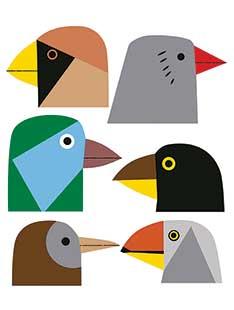
Ever wondered how chipmunks got their stripes? Or how flying squirrels got their wings? Ricardo Mallarino does. The Princeton molecular biologist has spent years studying the genetic codes that underlie the evolution of distinct animal traits.
Growing up in Bogotá, Colombia, Mallarino wasn’t always destined for the sciences. After one unhappy semester studying economics in college, he fell in love with an evolutionary biology class. Mallarino went on to earn his Ph.D. from Harvard, where he became fascinated by the intersection of evolution and molecular biology.
Particularly, he seeks “to connect the information that is in the genes to the resulting [traits] that we see,” noting that studying the growth process in animals can offer clues into organic development and evolution more broadly. “A single cell encodes all this information,” he says, “so how do all these instructions unfold?”
Mallarino’s Studies: A Sampling

BEAK SCIENCE Darwin’s finches comprise 15 finch species that live almost exclusively in the Galapagos Islands and have developed differently shaped beaks, which range from short and stubby to long and pointy. “Their beaks have been very fine-tuned and adapted to different food types,” Mallarino explains. For his Ph.D. research, Mallarino wanted to understand exactly how these adaptations occur on a molecular level. “What are the genetic instructions that drive that?” he asks. “We were able to identify a group of genes that were acting in these birds in different ways to produce the varying shapes and forms.”

COLORS, DOTS, STRIPES Mammals boast a dazzling array of skin adaptations: “I got interested in this problem of how organisms achieve these amazing and beautiful pigment patterns,” Mallarino says. By studying a species of striped South African mice, he and his team identified a gene that was highly active in the animal’s light stripes and completely shut down in the dark stripes. All previous studies had found that pigment cells are regulated by other molecules secreted in the animal’s skin. But Mallarino’s study found that pigment cells could also be regulated internally by mechanisms within them.

FLYING HIGH Some mammals, like flying squirrels and sugar gliders, have evolved “wings” that allow them to float through the air. “There’s something about the genetic instructions of these gliding organisms that makes them produce an extension of their lateral skin,” Mallarino explains. By studying the genetics and development of these animals, he and his team are hoping to understand what causes the wings to grow in the appropriate spots. He says, “We have very few examples of how you actually evolve a novel structure. And a gliding membrane is a completely new structure.”











No responses yet